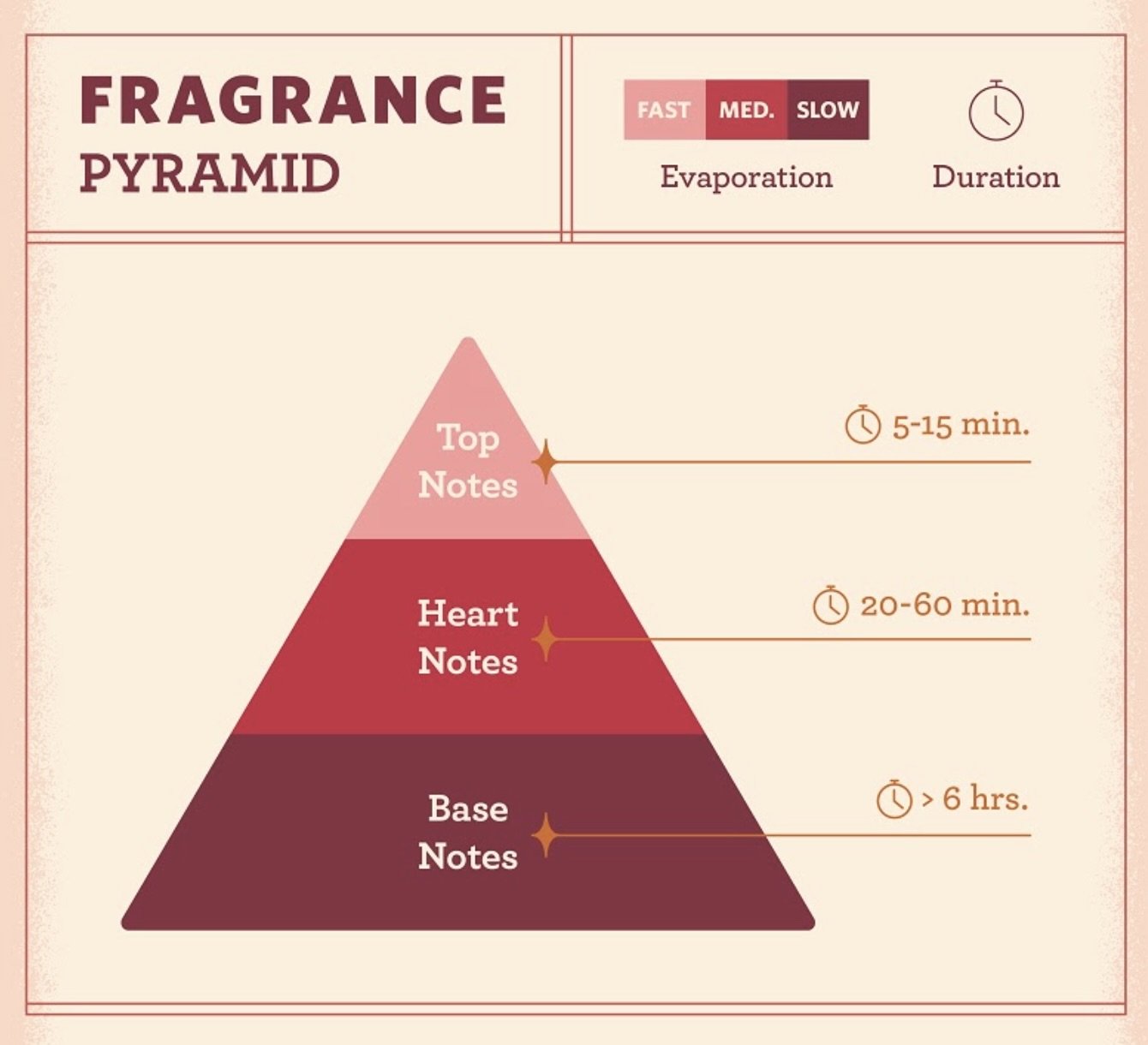The Science of Perfume: Decoding the Composition and Structure of Fragrances
Written By Alanna Hollins
Photography By Kya Wilson
Modeled By Khristin Guardado, Emily Mettlach, Alanna Hollins, Ian Street, & Daisy McDonald
Successful luxury brands and entrepreneurs like Coco Chanel and Tom Ford have concocted ways to create their best-selling perfumes. Fragrances and perfumes are what provoke one’s confidence, memory, and even their lifestyle. Perfume combines complex elements to develop alluring scents, enhancing any lifestyle.
What is Perfume and fragrance?
Perfume is a liquid combination of fragrances that radiates a pleasant scent. Fragrances are extracted from essential oils that come from plants, spices, or man-made compounds. There are five different types of perfume based on the level of concentration of the aromatic compound. There are three types of perfume that most common consumers purchase:
Eau de parfum/parfum de toilette: 15-20% fragrance concentration, cheaper than parfum, lasts 4-5 hours.
Eau de toilette: 5-15% fragrance concentration, lasts 2-3 hours.
Eau de cologne: 2-4% fragrance concentration, lighter formulation, primarily used for males as an aftershave or splash-on fragrance, lasts about 2 hours.
The different levels of concentration help create an ideal product for companies to develop and deliver to specific demographics of their consumers solely based on the strength of the fragrance. Perfume is nothing new, but it has evolved. The invention has been around since the Mesopotamia era and since then, the idea of modern fragrances has emerged into what we know today. At that pivotal moment, the industry's course was forever altered as Coco Chanel unveiled her revolutionary perfume, Chanel No. 5, by spritzing it at an outdoor gathering. The captivating scent stirred such intrigue that every woman present sought to obtain it, thus solidifying Chanel's profound influence in the world of fragrance for years to come. Chanel No. 5 was a popular hit because of the fresh and clean scent that came from man-made compounds, which was the first perfume ever made with those compounds.
The Fragrance Pyramid
The fragrance pyramid is the layers of scent combinations, often referred to as an accord, that make up the final perfume fragrance. A fragrance note is an individual scent, such as vanilla, that is put into one of the pyramid layers and is divided into three categories: top notes, middle or heart notes, and base notes. According to perfume enthusiast Leanna Serras, the lightest and most volatile scents, such as citrus or floral notes, are commonly found in top notes. In contrast, middle notes, which often consist of spices or fruity scents, have a more intricate composition and are responsible for giving a fragrance its unique character. Lastly, base notes, characterized by heavy and long-lasting scents like woody or musky aromas, conclude the overall fragrance experience. Carefully selecting fragrance notes is crucial to perfume makers, for they want to sell an item that will bring forth emotions or memories, one’s lifestyle, and pleasant smells. Fragrance notes not only determine the longevity of the scents but also determine the personality of each scent used. The middle notes are the ones most people remember because the middle note is known to give fragrance character. For instance, florals are common finds within the heart notes and floral notes are associated with people who are friendly and down-to-earth. Personality fragrances typically correlate to a person’s lifestyle and preferred scent profile.
The Fragrance Wheel
The fragrance wheel represents the various scent families and subfamilies in a circular diagram. It organizes scents according to their resemblances and distinctions, showcasing their interconnectedness. Micheal Edwards created the idea to help retailers suggest different perfume scents and products to customers more skillfully. There are four primary categories of scent families: Floral, Oriental, Woody, and Fresh, each comprising various subfamilies. Each scent family possesses its unique characteristics, and it is not uncommon for individuals to have a preference for one scent family over the others. Knowing your preferred scent family can be beneficial when embarking on a fragrance-shopping adventure. Although most products lack explicit labels indicating their scent family, it is possible to identify the perfume ingredients that contribute to the fragrance. The floral scent family is popular in both women's and men's fragrances, with subfamilies like floral, fruity, soft floral, and floral oriental. The oriental fragrance family includes luxurious scents with elements of herbs, spices, and powdery resin notes, and has subfamilies like soft oriental, oriental, and wood. Woody fragrances are rich and warm, with subfamilies of woods, mossy woods, and dry woods. Fresh fragrances are invigorating and clean, with subfamilies like aromatic, citrus, green, and water. The fragrance wheel can be used to create the best scent combination by using it like a color wheel. Subfamilies adjacent to the wheel blend well together, while complementary scents can be found by choosing a subfamily and identifying the note directly opposite to it on the wheel. For example, citrus notes complement soft oriental fragrances, while water scents complement oriental fragrances.
Fragrance Notes that Harmonize
Now that we have a basic understanding of the fragrance wheel and pyramid, let’s look at how companies put these ideas into a product. This is a list solely based on the best-selling perfumes for both women and men:
Dolce & Gabbana Light Blue for Women: inspired by aquatic scents with a Mediterranean style.
Top notes: Sicilian Lemon, Apple, and Bellflower (citrus fruits and light florals)
Middle notes: Bamboo, Jasmine, and White Rose (florals)
Base notes: Cedar, Musk, and Amber (scents filled with richness)
Polo Red by Ralph Lauren: A fragrance with bold fruit accords balanced by spicy woodiness.
Top Notes: cranberry, grapefruit, Italian lemon (fruits and citruses)
Heart Notes: saffron, sage (herbs and spice)
Base Notes: wood, amber, coffee (spice and wood).
This is a simple but ideal list of types of fragrance/scent notes that go into the fragrance pyramid and how they create beautiful combinations to make the best-selling perfumes on the market.
Fragrance is the creation of alluring scents through the combination of elements such as fragrance notes and scent families that can elevate and complement various lifestyles. Perfume is a way for people to express themselves to others without truly thinking about it. Understanding the deeper meaning of what fragrance notes go into these products can help show a greater appreciation for not only perfume but also the connections you can create based on scent.








